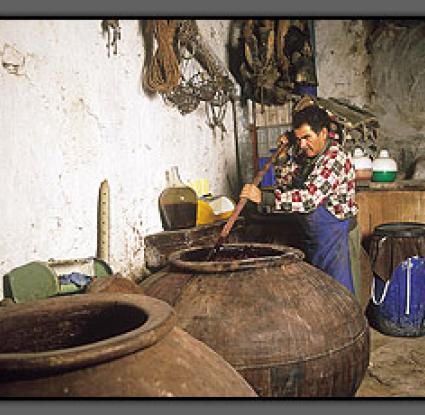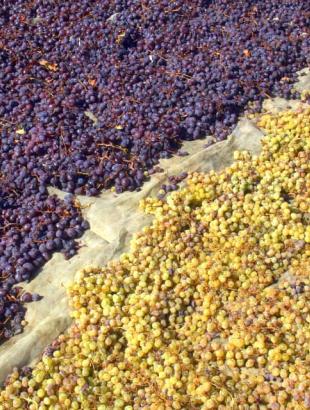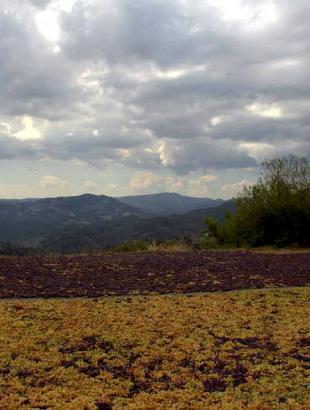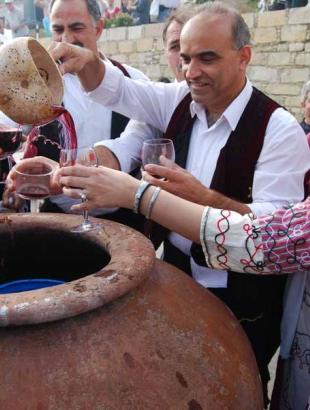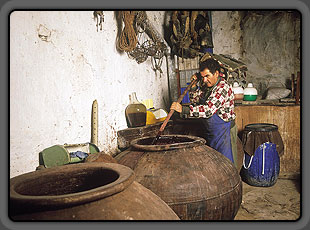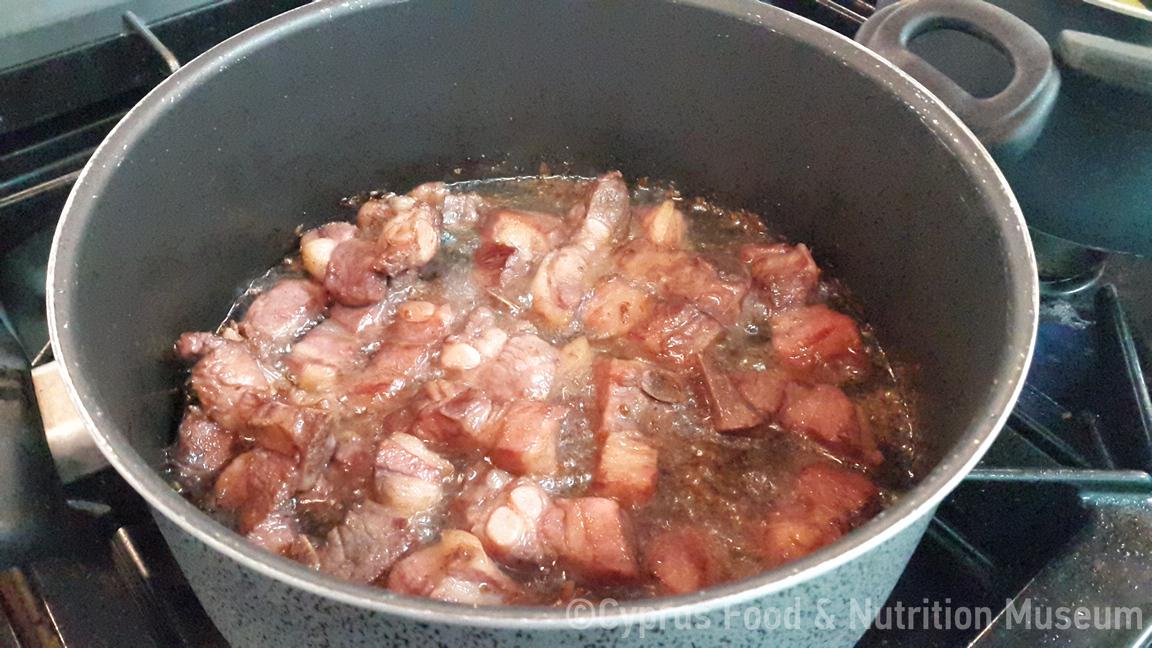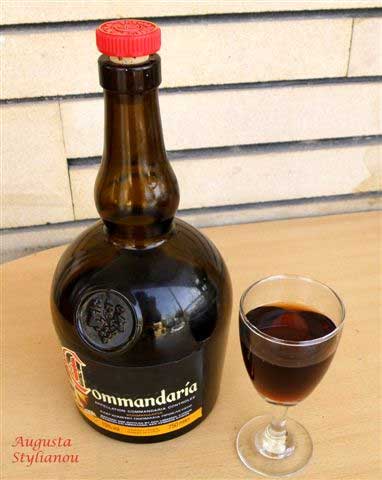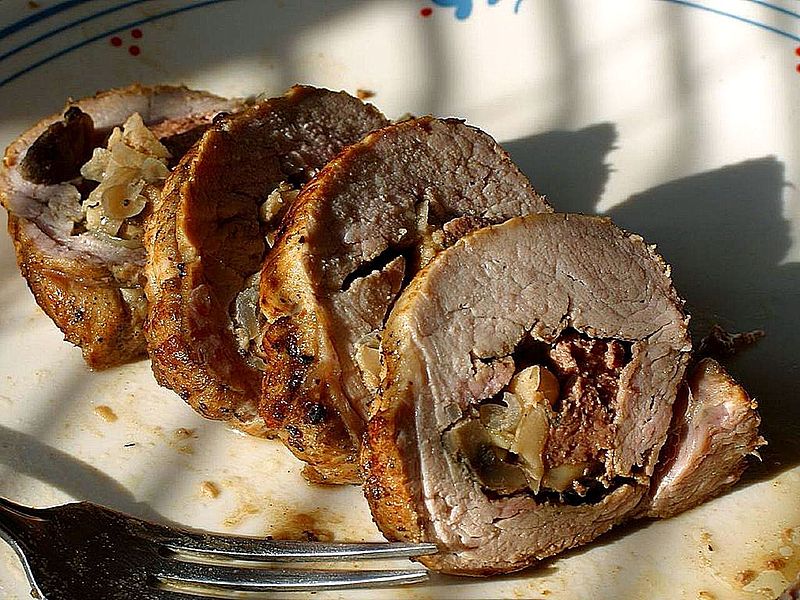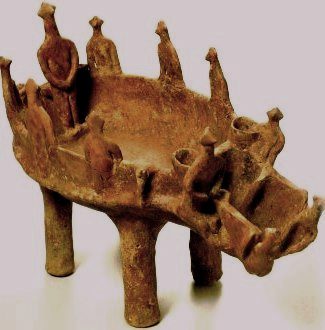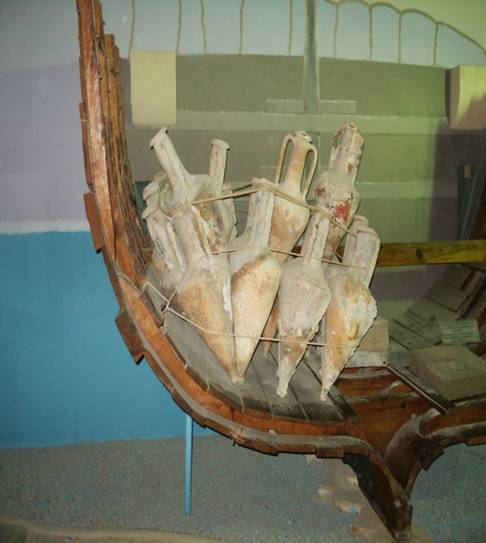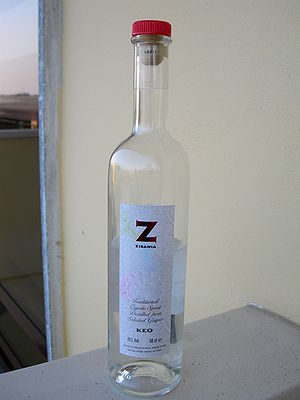"We leave the wine in the barrel for forty days and then pour it again through the strainer into a wooden barrel or pot. It will stay there for another three months or so, at which point it's ready for consumption. The best quality wine is obtained when the place where it is stored is humid and dark." (Dimitris Papaneofytou, Lasa Paphos).
Name - Recipe
Κρασί.
Wine grapes.
Version A
“When it is harvest time, we pick the grapes and carry them home. If we want our wine to be sweet, we put them in the sun for a few days. The more time they stay in the sun, the sweeter our wine will be. Crush the grapes. They are placed with their skin on in a barrel, after having removed the stems. They are left for eight days to undergo the first fermentation and give our wine its "black" colour. We pass the grapes through a strainer, remove the skins and take the wine. The skins go into a separate barrel and out of them we will make zivania. We leave the wine in the barrel for forty days and pour it back through the sieve into a wooden barrel or pot. It will stay there for another three months or so, at which point it is ready to drink. The best quality wine is obtained when the place where it is stored is humid and dark.” (Dimitris Papaneofytou, 39 years old, Lasa, Paphos)
Version B
Grapes for the production of wine are selected from vines of a superior variety. In earlier times, the grapes were placed in clay basins and crushed (by foot treading) and then put into the pots for fermentation, which usually takes 12 days. Every day the spilastiri (spiral press) was used to press the grapes because the fermentation would heat them. When the fermentation was finished, they would strain the grapes to get the wine. A small basket or strainer was placed in the middle of the pot and the wine was collected with the koloka (bottle-gourd) and decanted into a clean and sterile jar. The sterilisation was done by sulphur fumigation. The bunches, seeds and grape skins, known as zivana, were left behind in the pot The pots with the wine were left open for a few more days to allow the fermentation to be completed and to clean off form the sediment. The pot was then capped with a round marble slab and sealed with plaster to prevent air from entering the pot. http://limnati.org/gr/traditional-products-lgr.html
Additional information and bibliography
Oral testimony: Dimitris Papaneofytou, 39 years old, Lasa - Paphos (see. Kourri, P. and Lazarou, S. (eds.) (2007). Traditional recipes of the village of Kyperounda, unpublished data).
Limnati Community Council, Traditional products web source: http://limnati.org/gr/traditional-products-lgr.html
Stalo Lazarou

